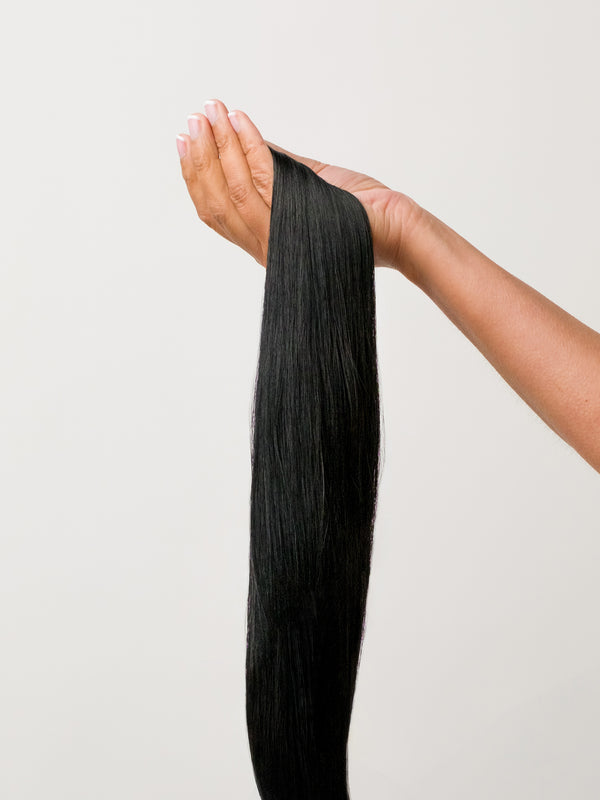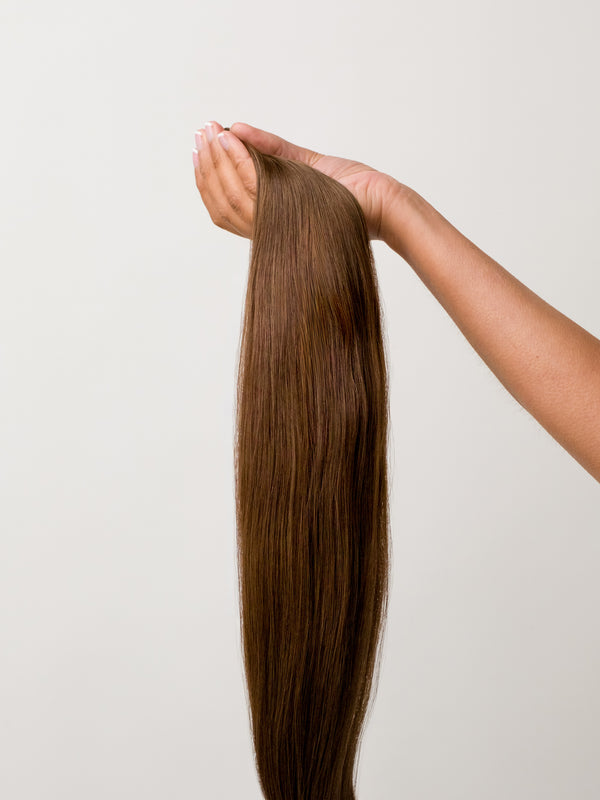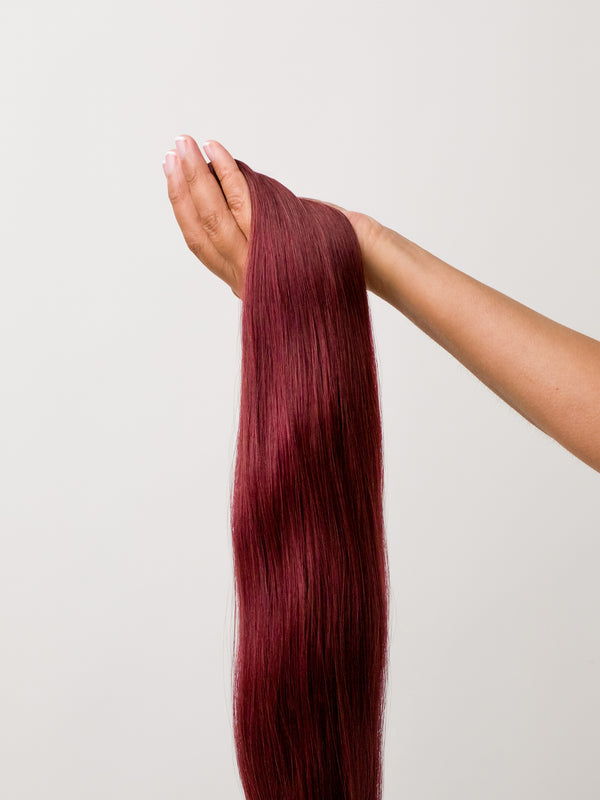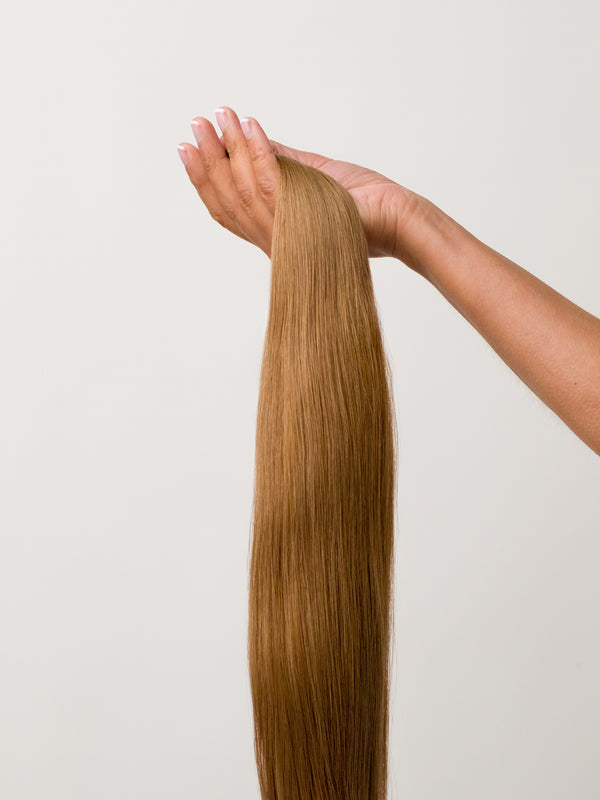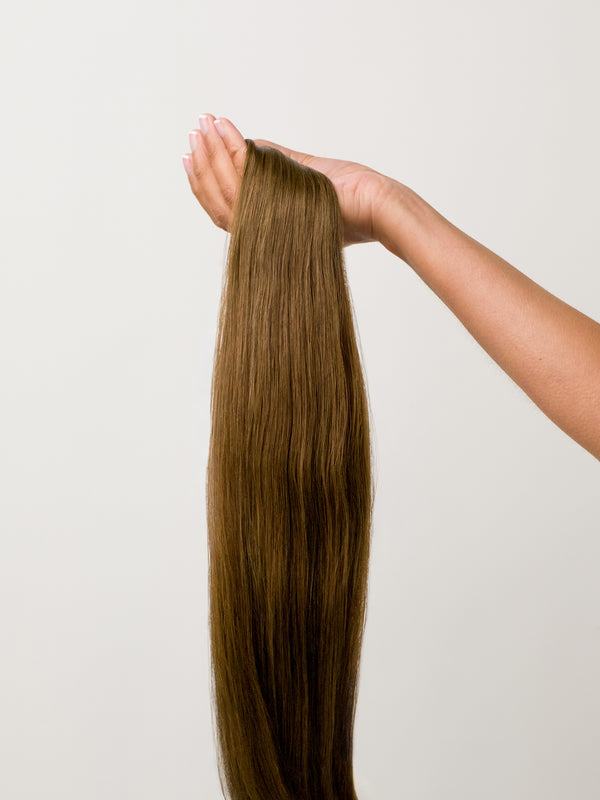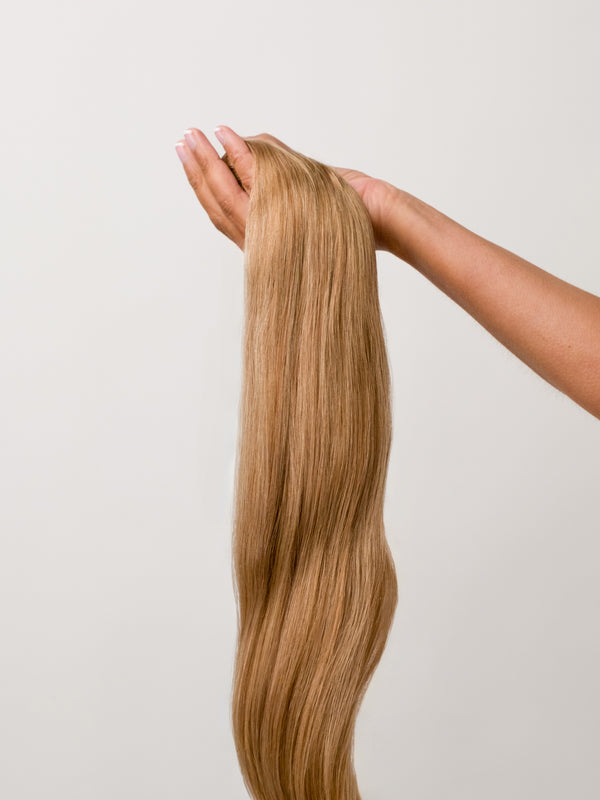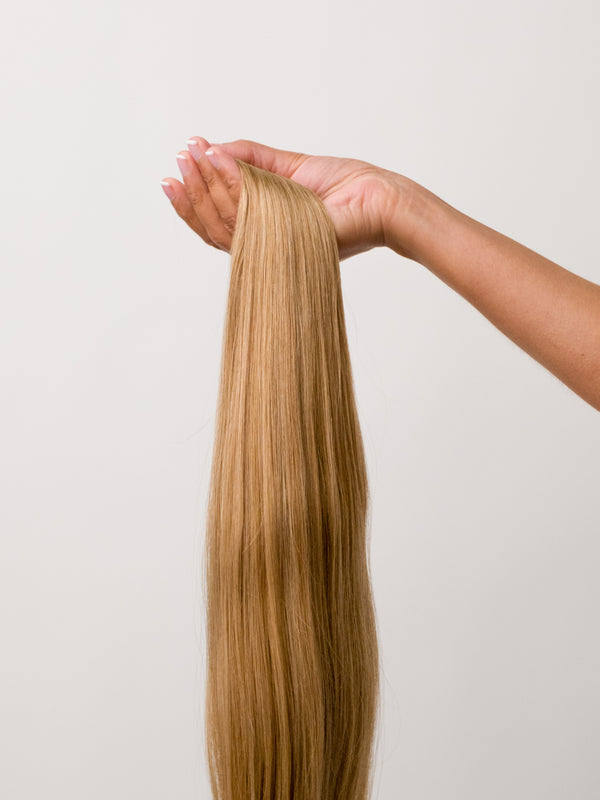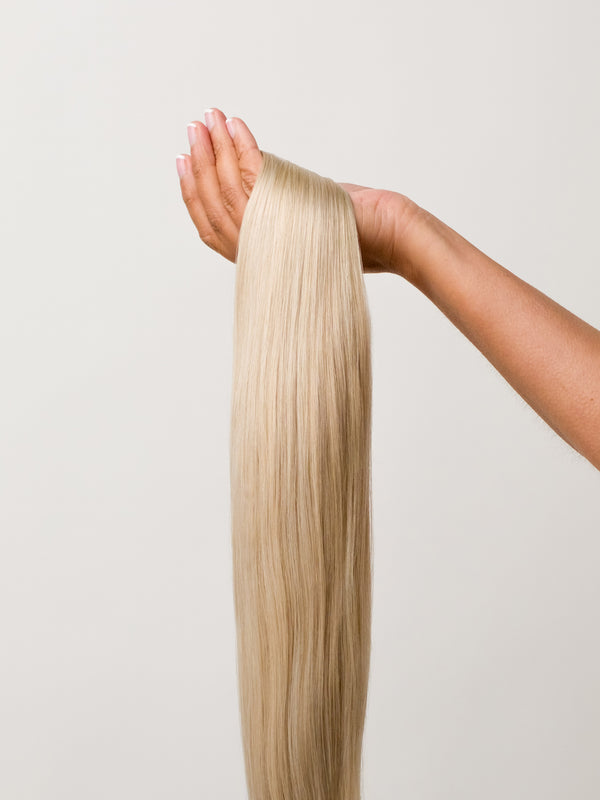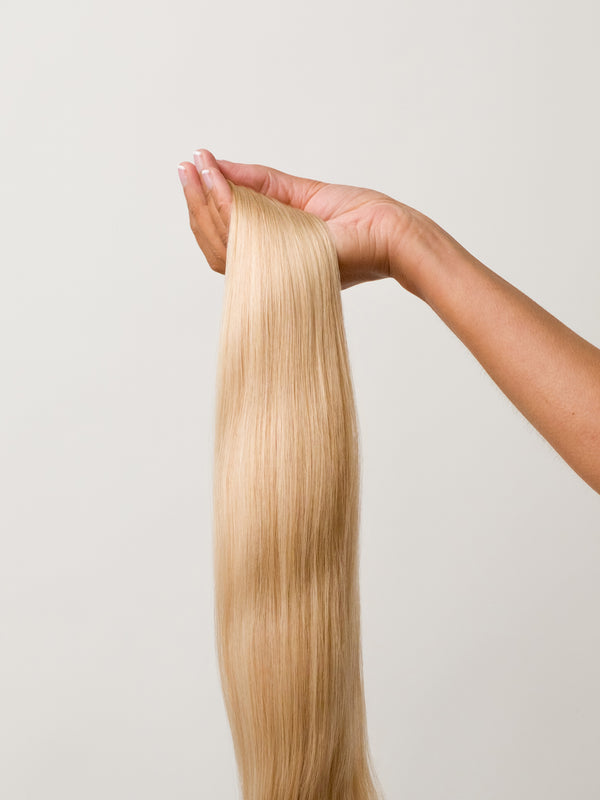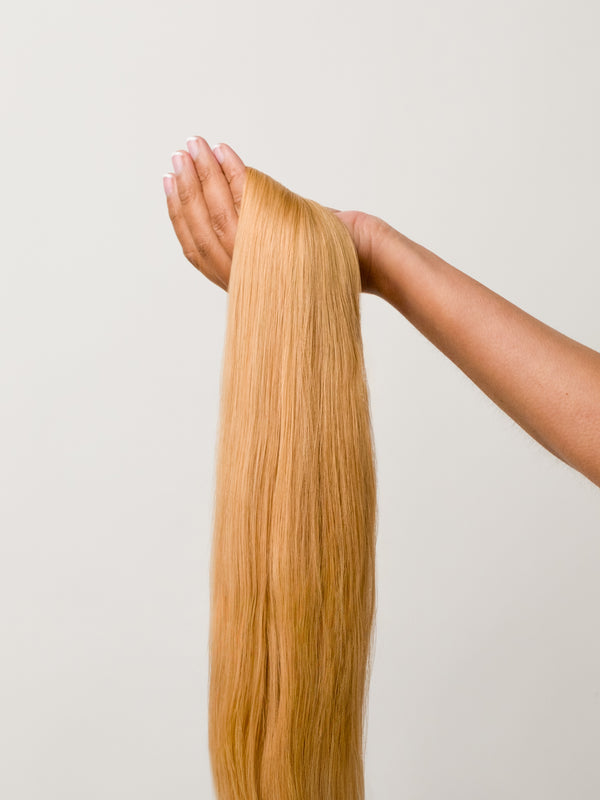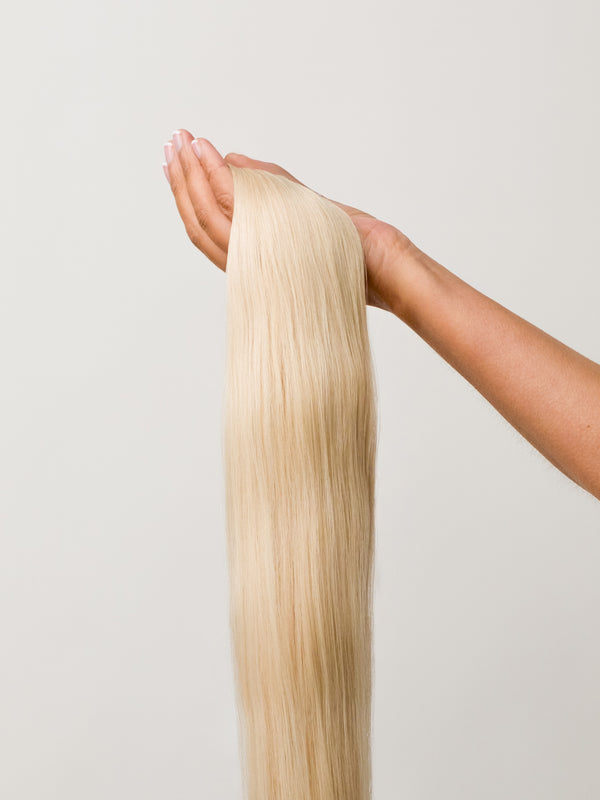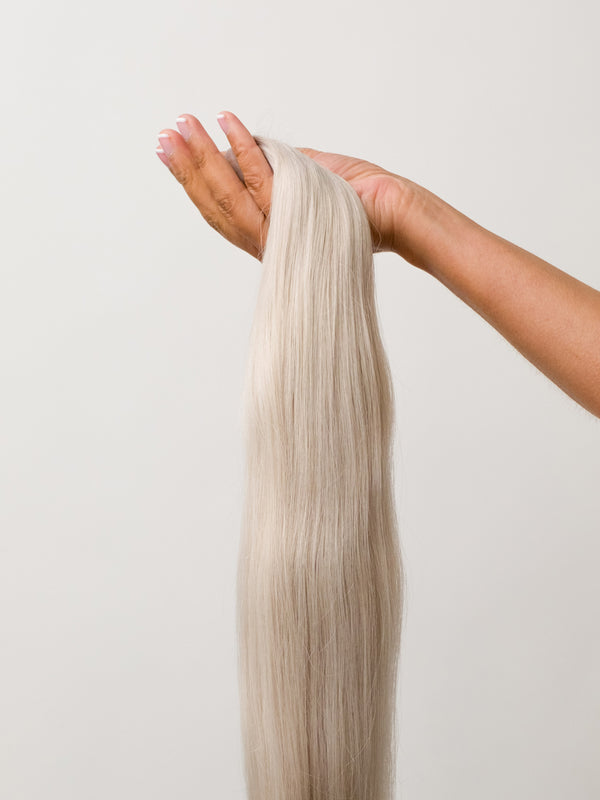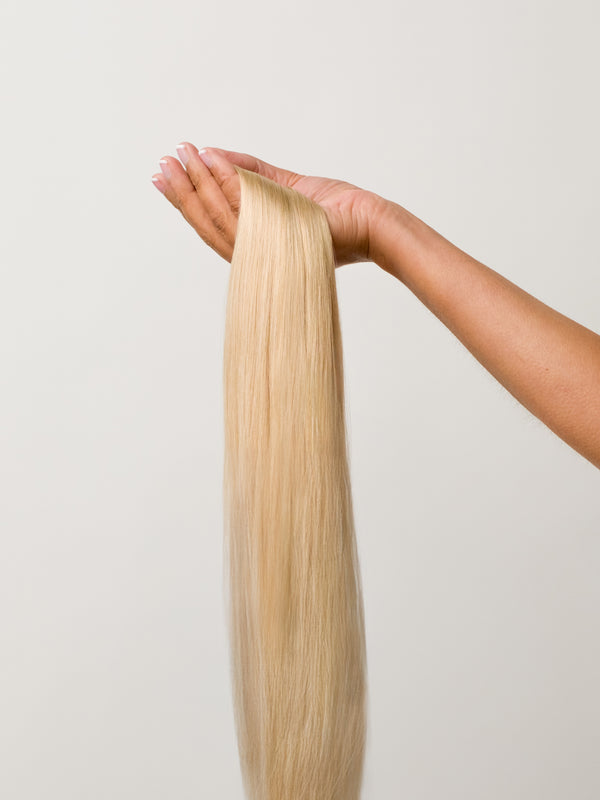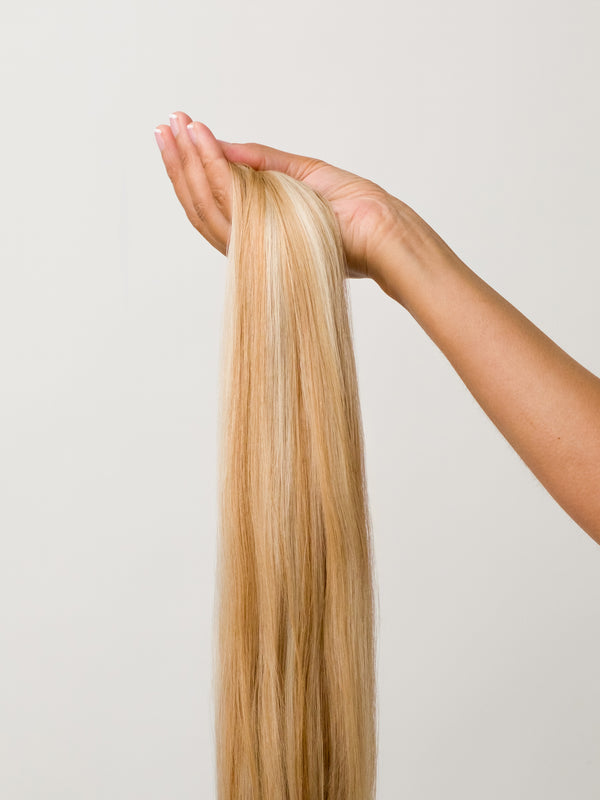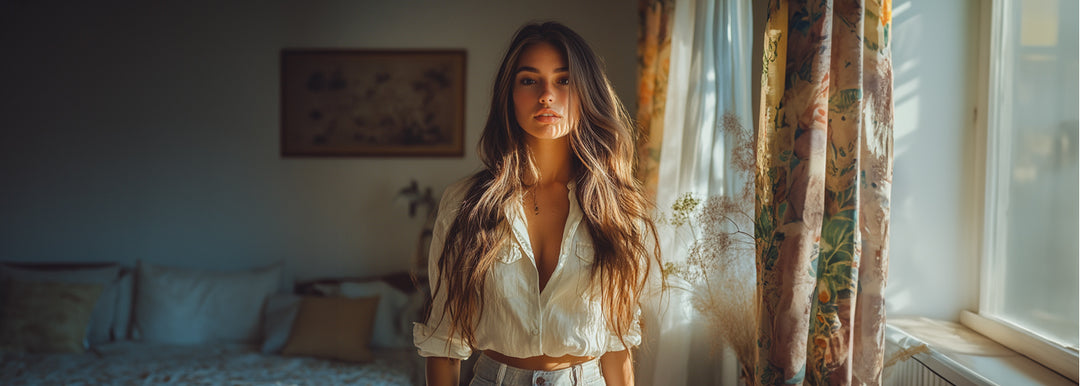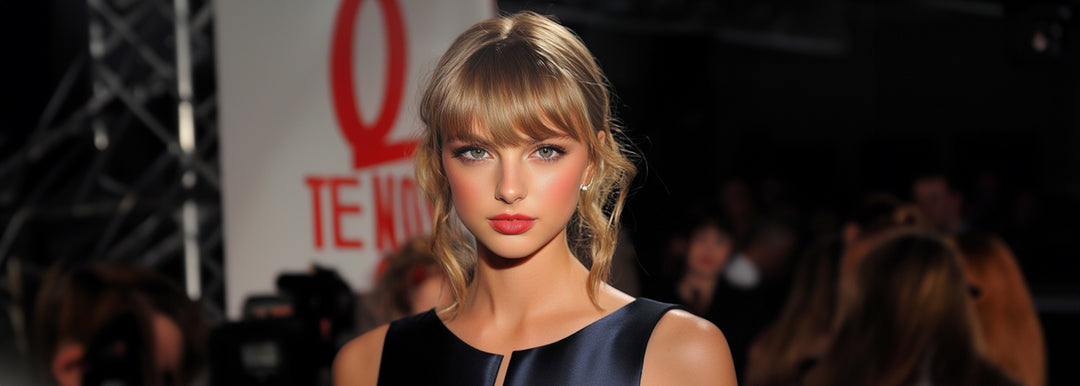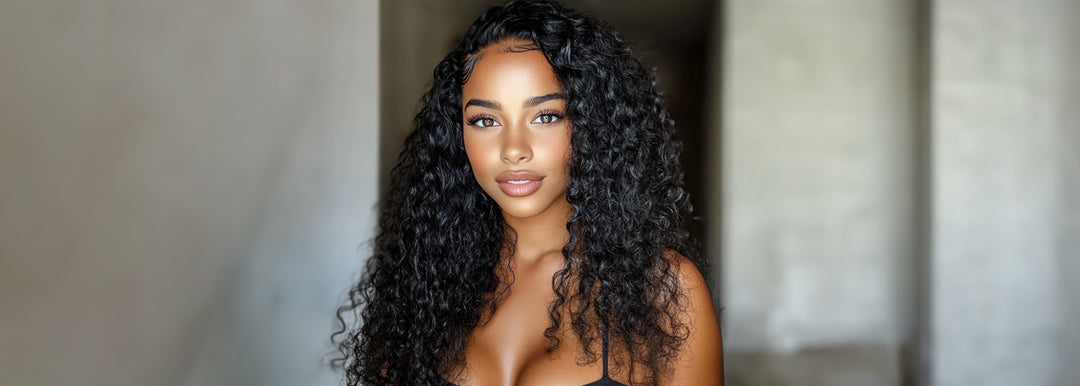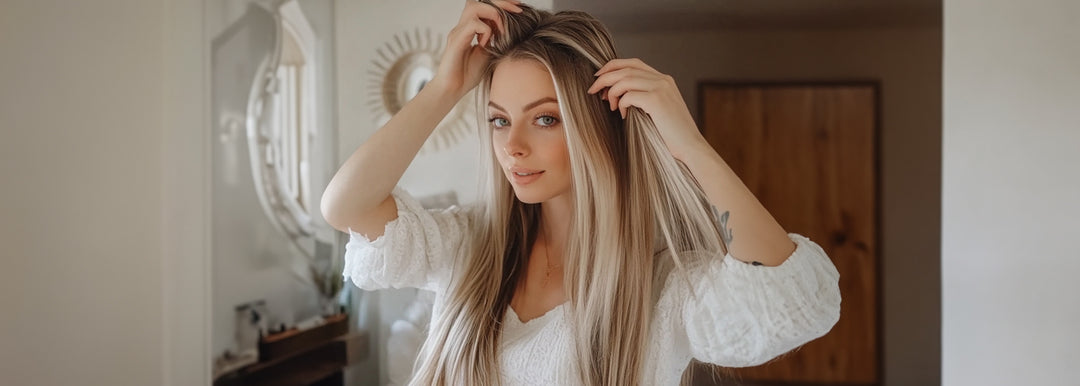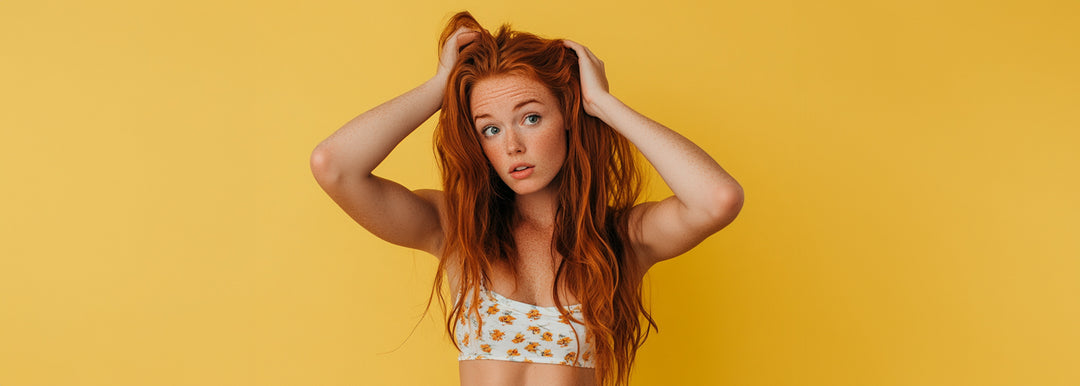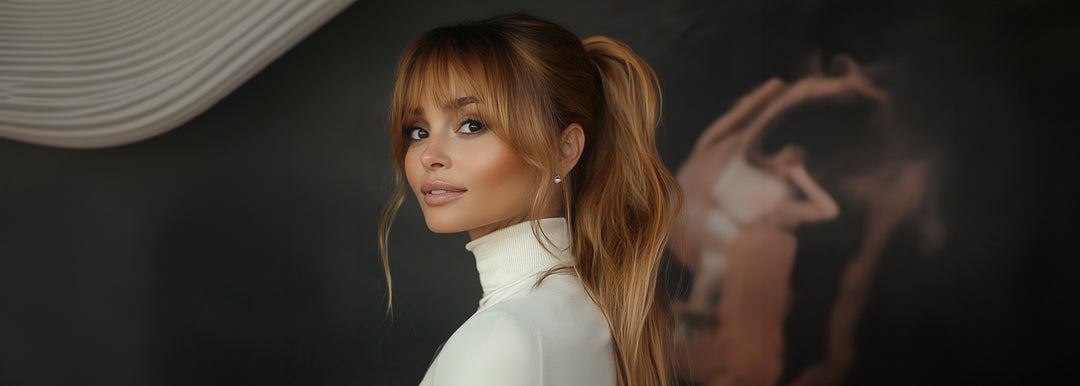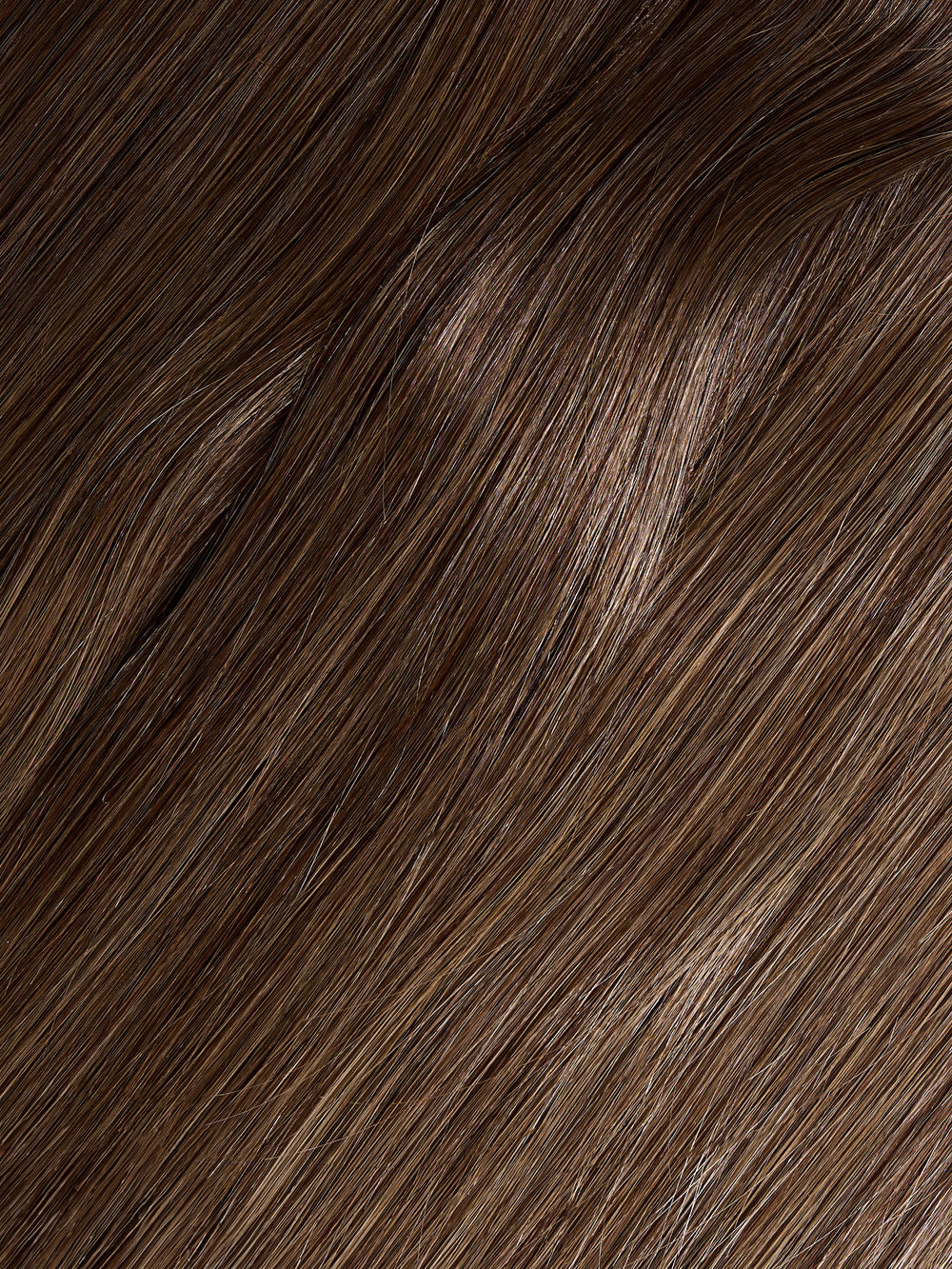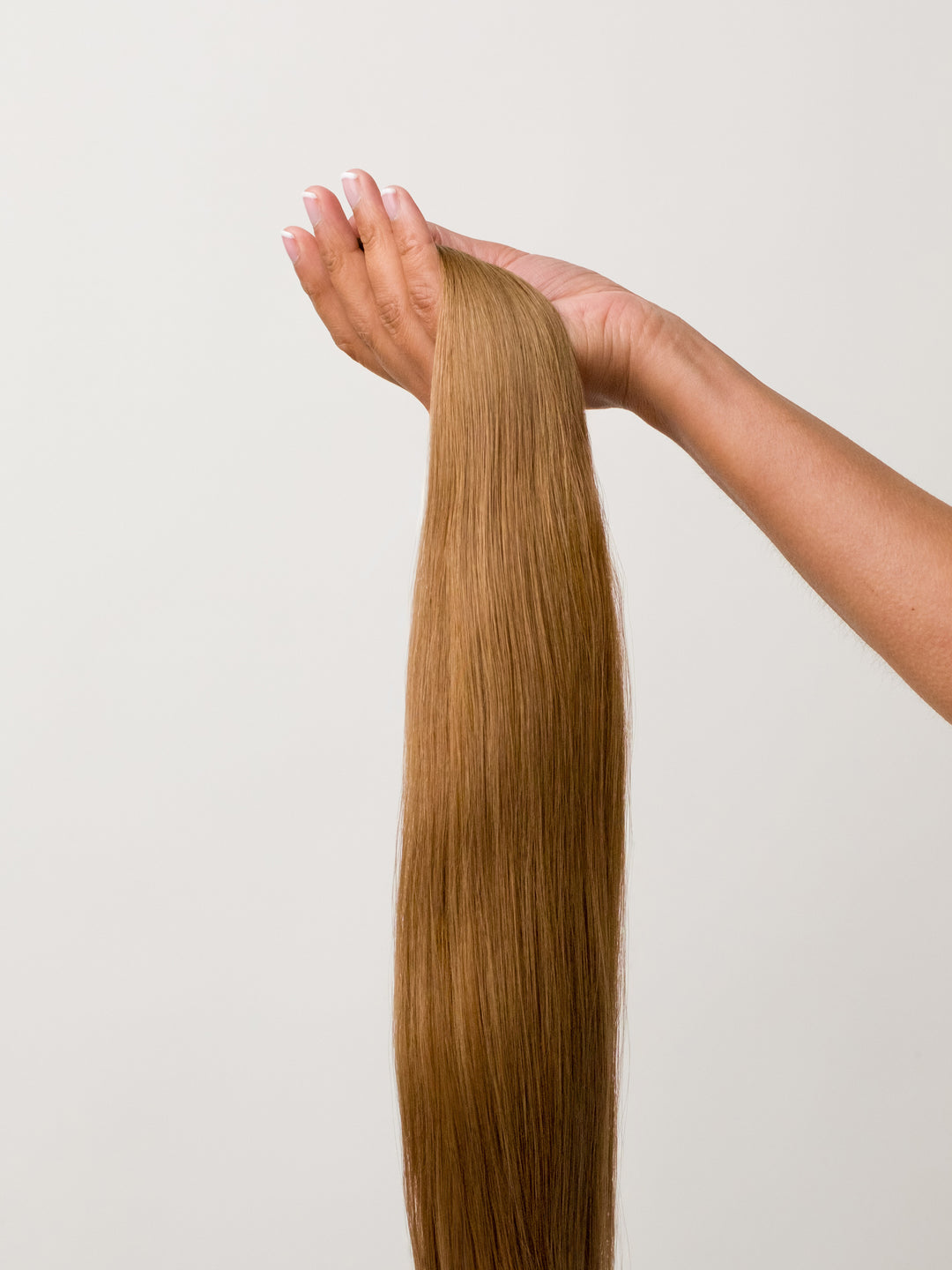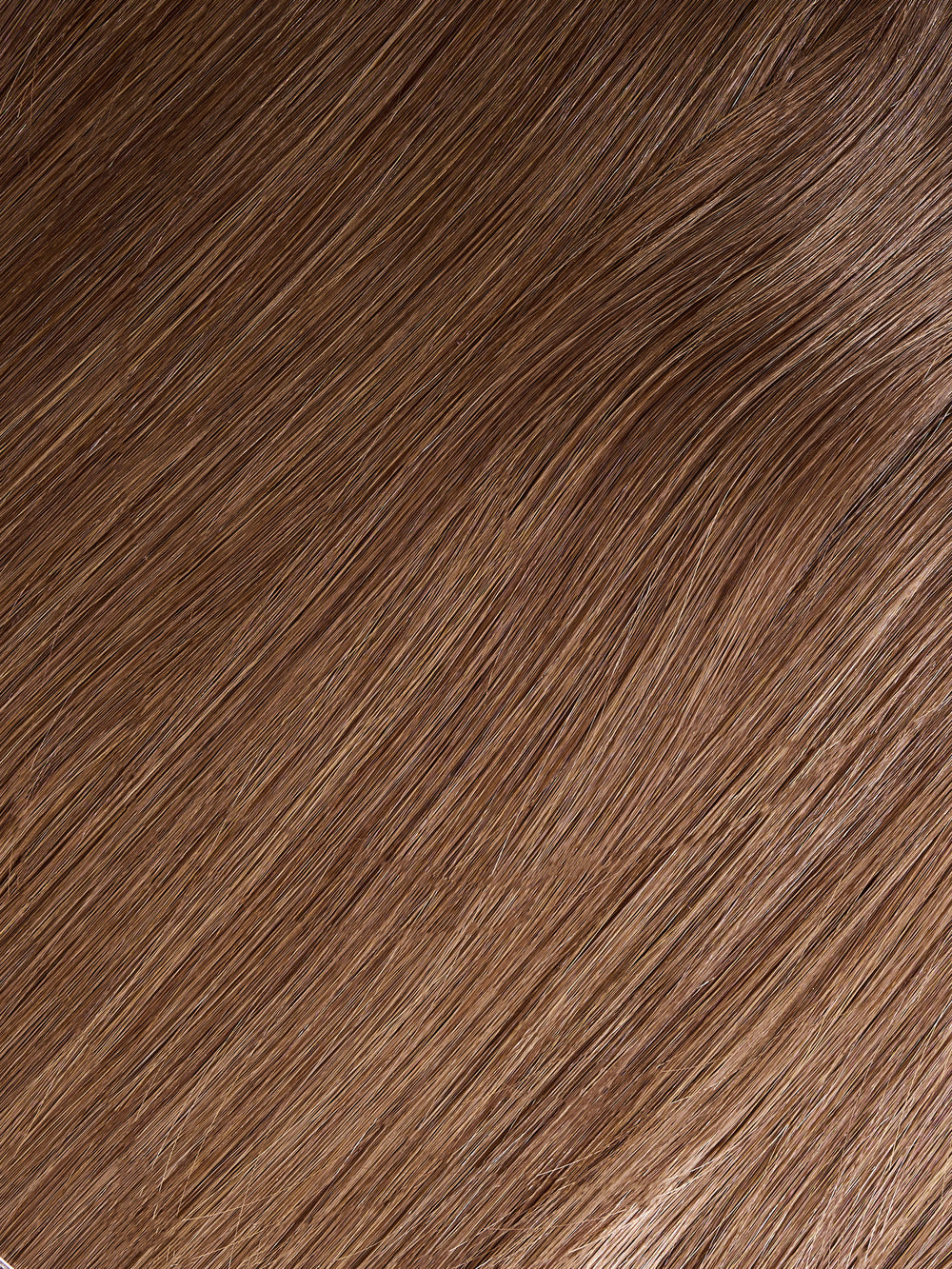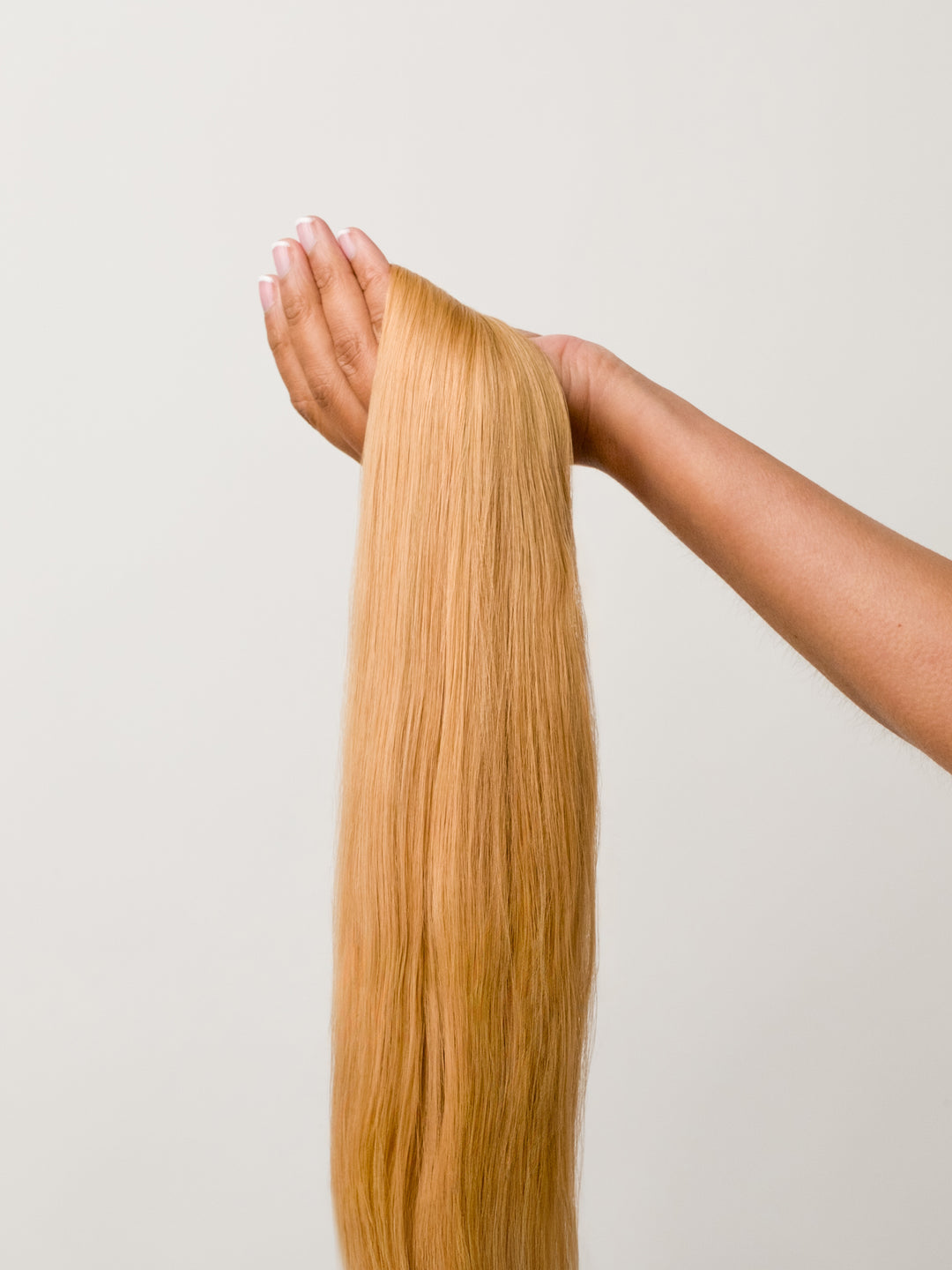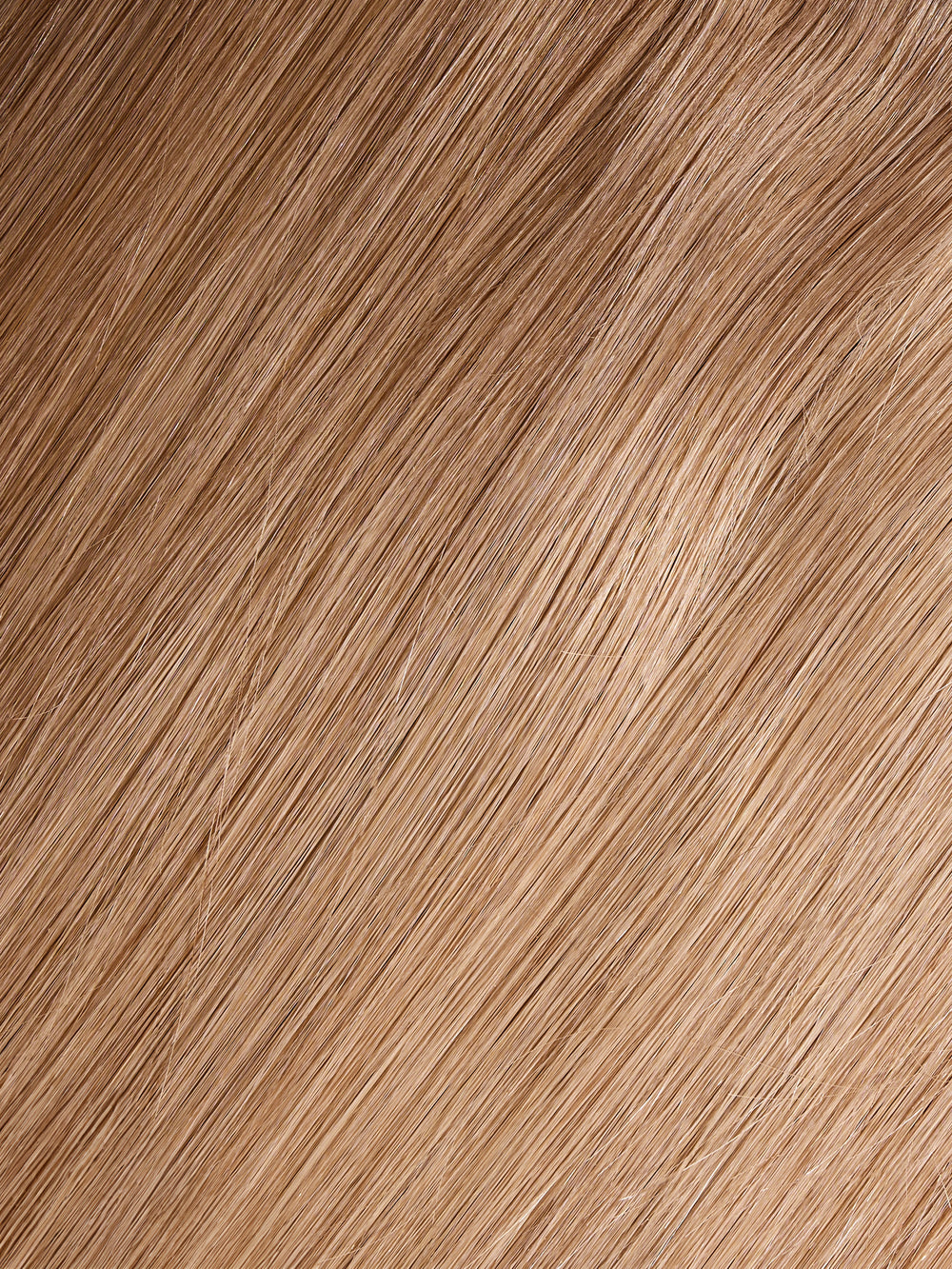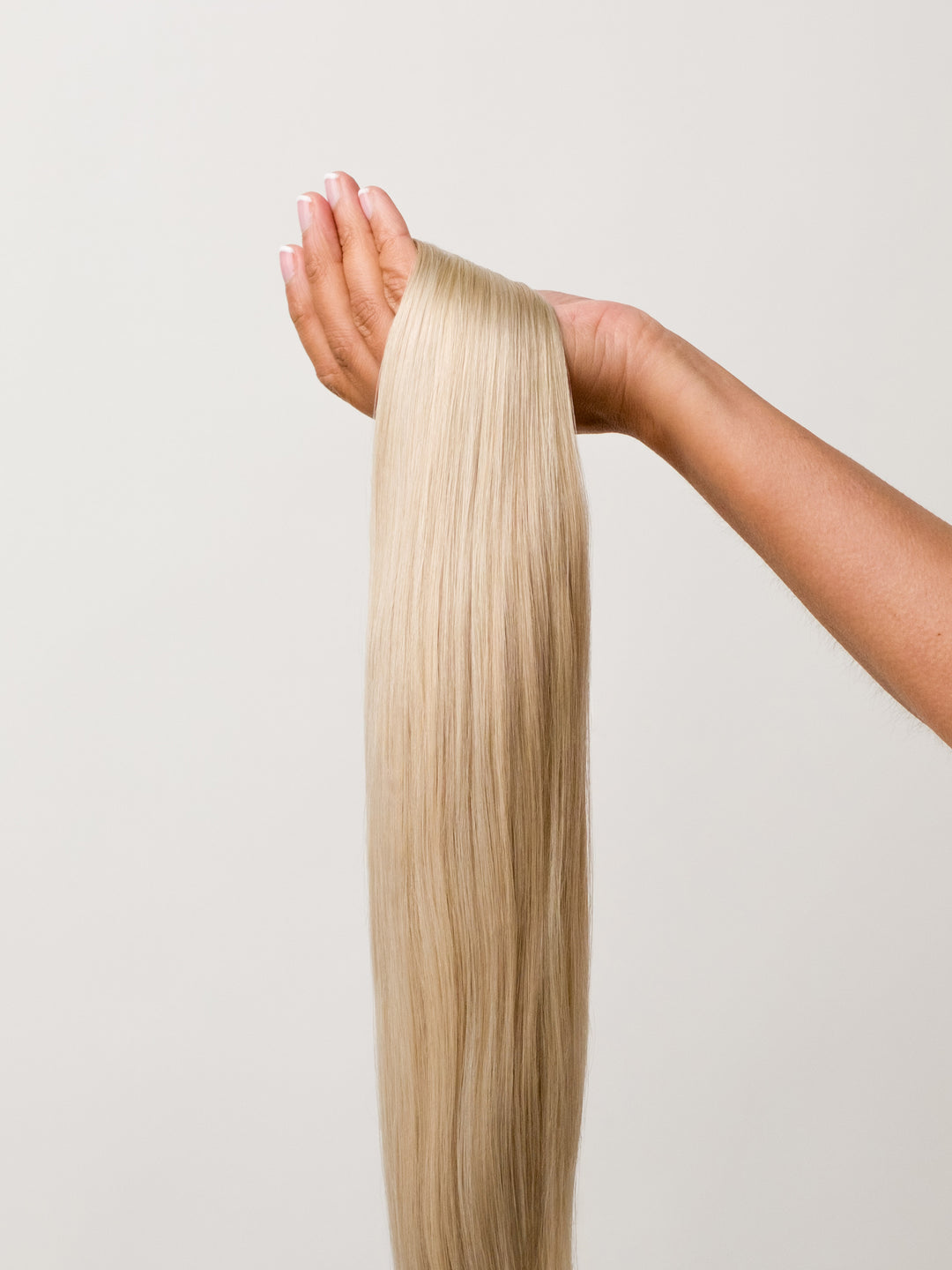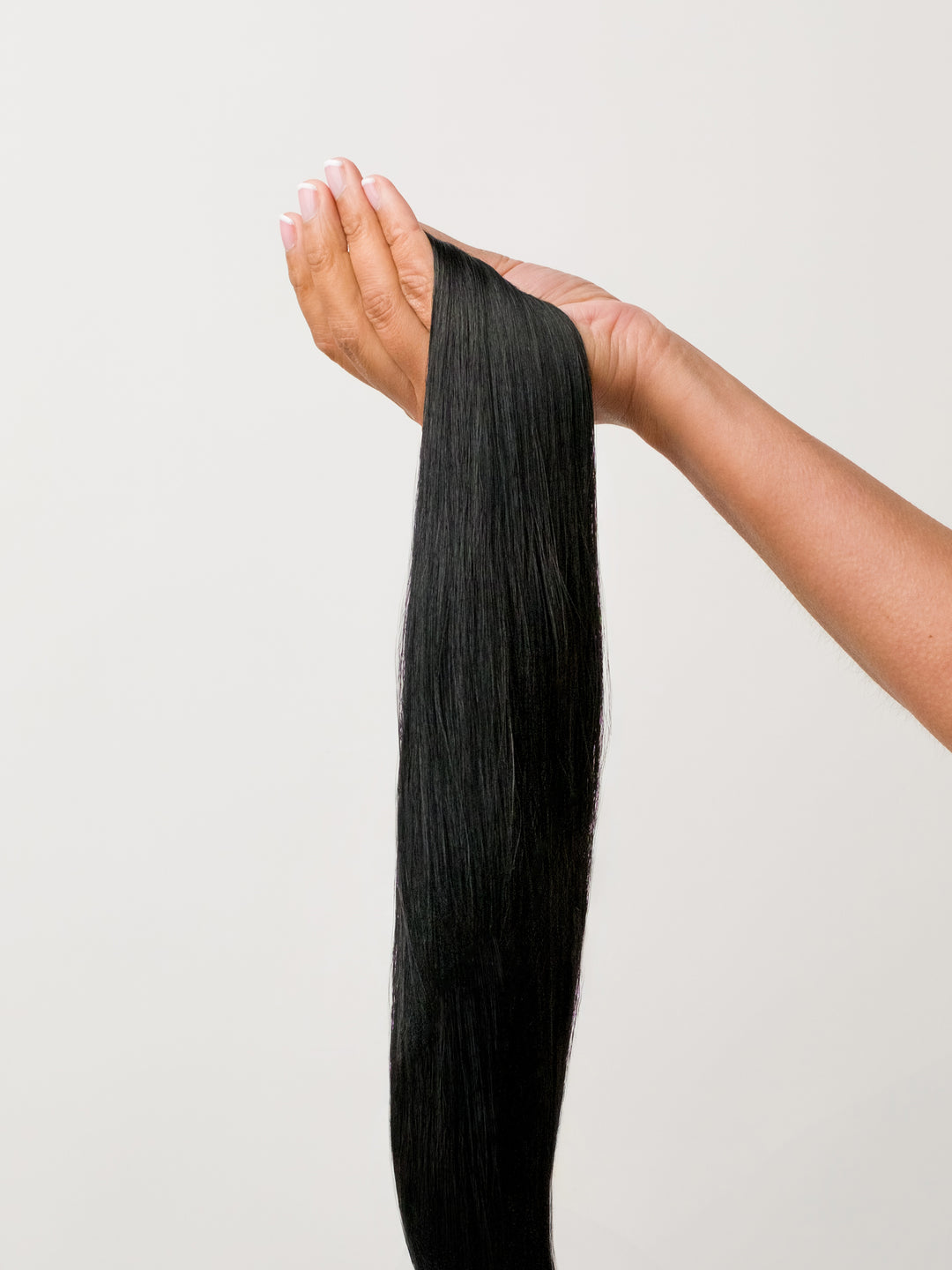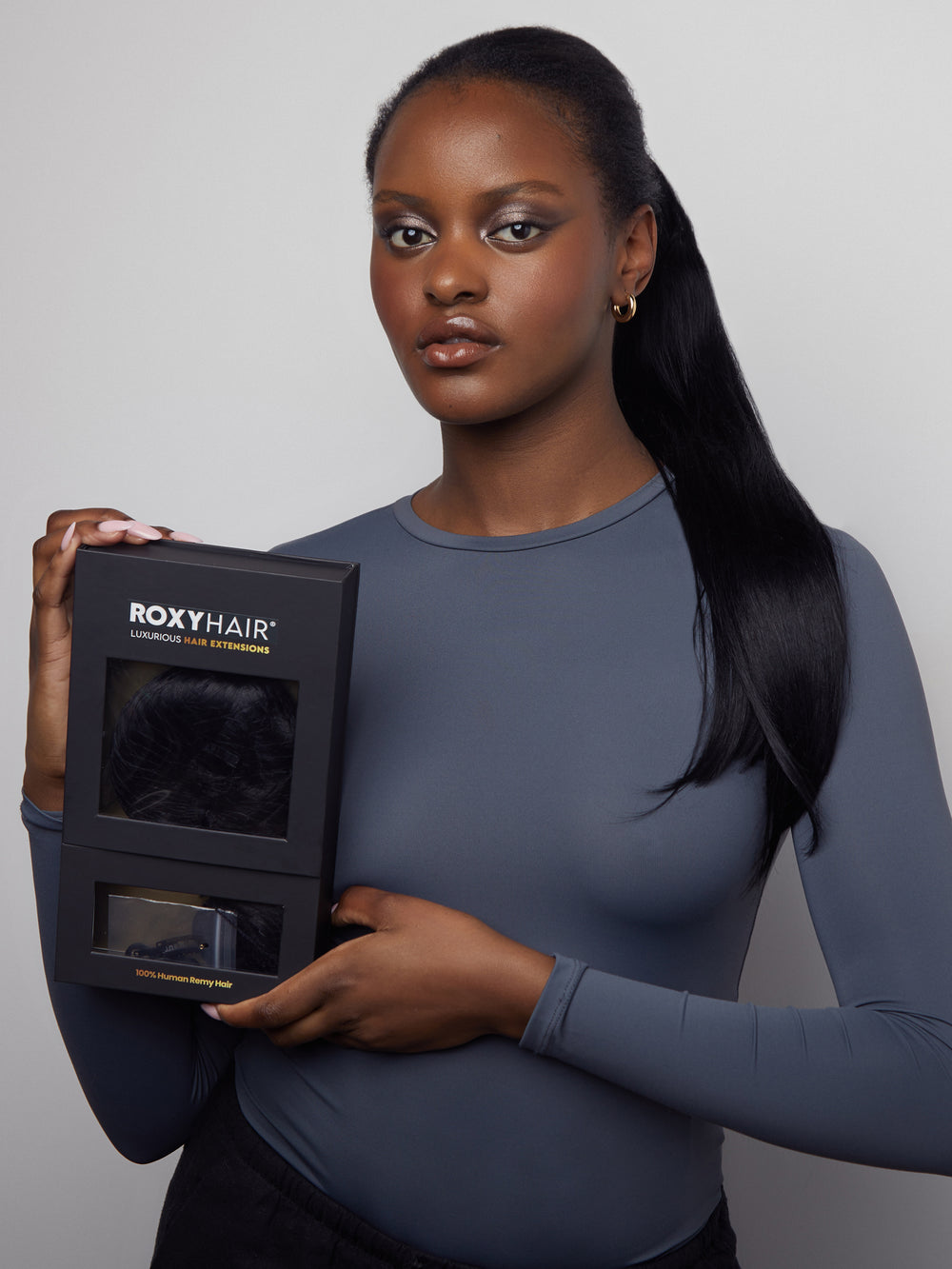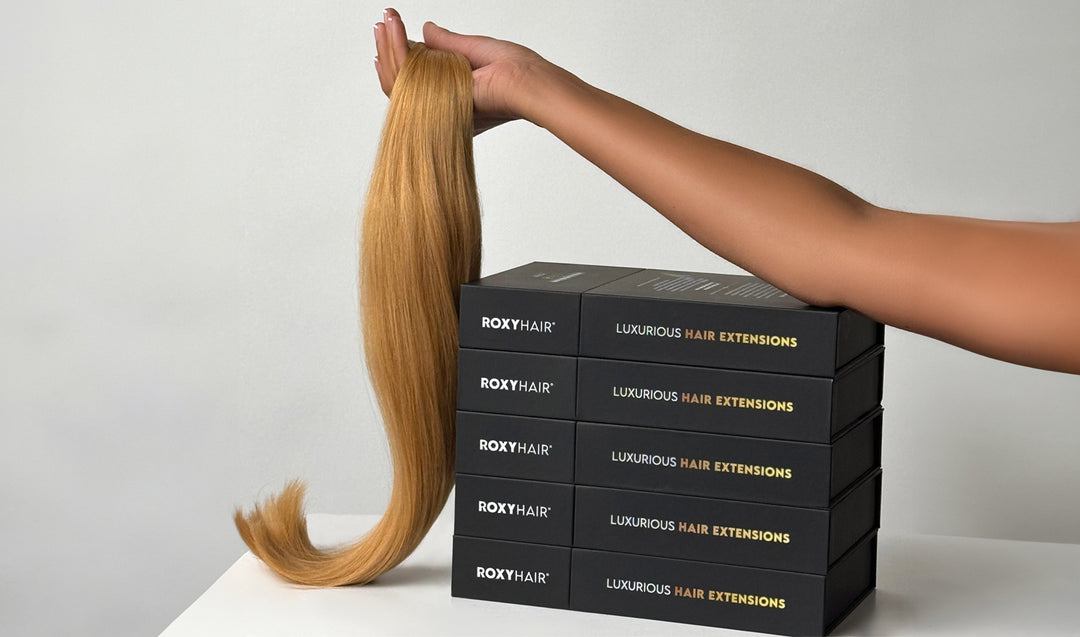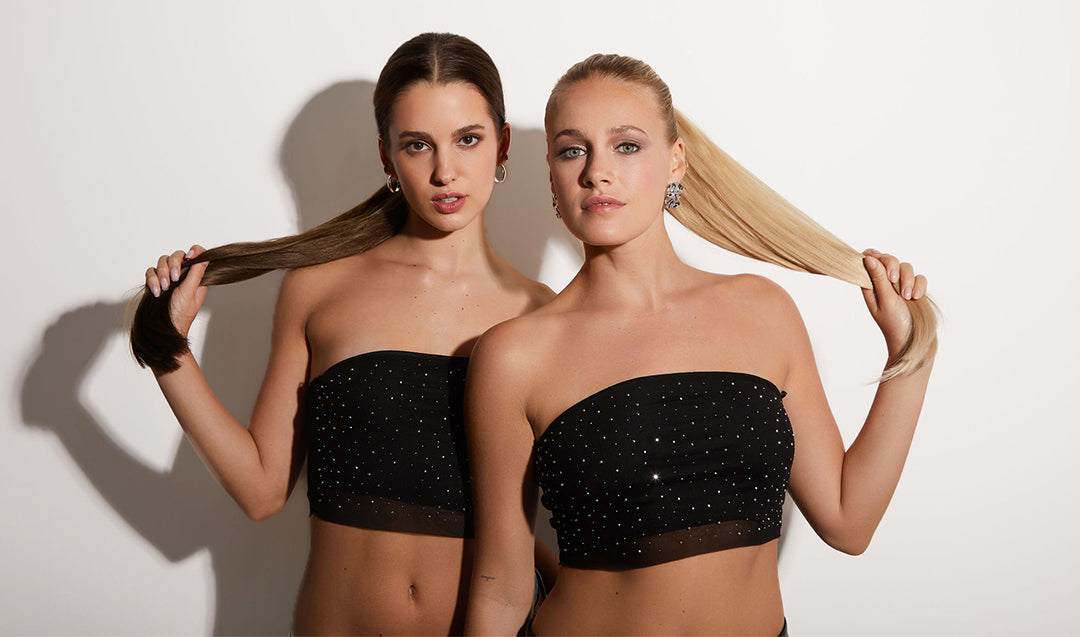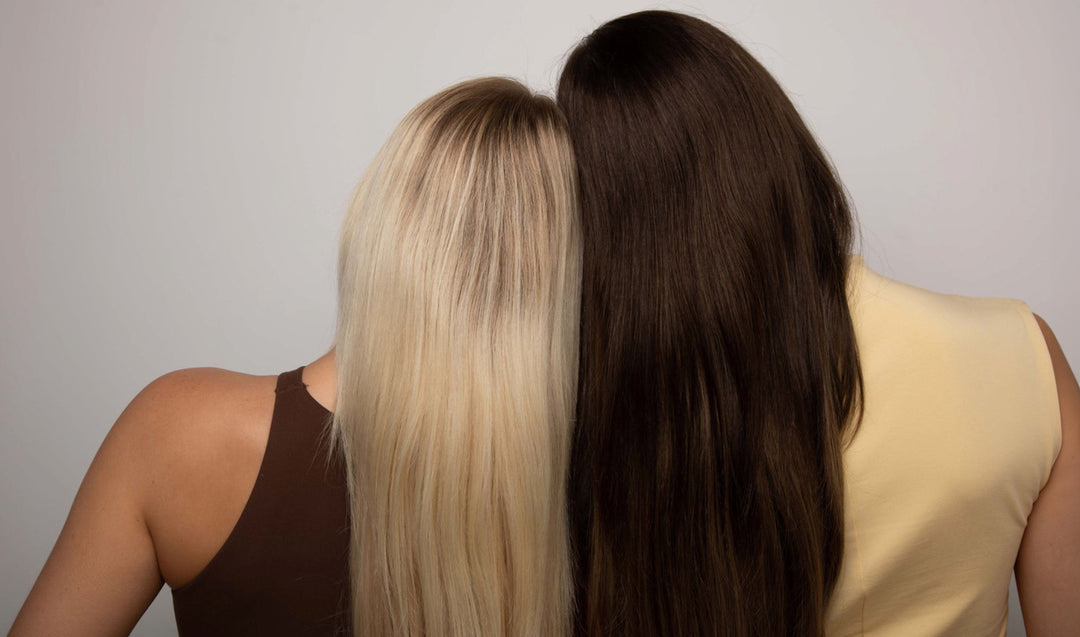Finding clumps of hair in your brush can be distressing. Hair loss leaves many of us searching for solutions to restore our locks. While working to address the issue holistically, hair extensions offer an instant fix.
But the world of extensions can be overwhelming for beginners. With so many installation methods and types of hair available, it's hard to know where to start. One common question is how long you can safely wear clip-in extensions. While exciting, improperly wearing extensions can damage your natural hair and the extensions themselves.
This article provides helpful tips for newbie hair extensions users. You'll learn how long you can comfortably wear hair extensions each day, what affects their lifespan, and easy ways to keep extensions and natural hair healthy.
What You'll Learn
-
You'll get tips on how long clip-in hair extensions can last, depending on how often you wear them. Spoiler: daily use decreases their lifespan quite a bit!
-
You'll learn the best application methods to avoid damaging your real hair over time. Pro tip: distribute those clips evenly and avoid excessive tension.
-
You'll discover maintenance rituals that extend the life and quality of your clip-in extensions. Stuff like gentle washing, hydration, and heat protection make a difference.
-
And you'll see why taking occasional breaks from wearing the extensions helps keep your natural hair healthy. Giving your locks a breather now and then is self-care!
The Lifespan of Clip Ins
 Clip-in hair extensions don't last forever, and some falling out over time is normal, especially when worn daily. But they can last a lot longer than other temporary extensions like clip-ons for those with short or thin hair. With good care, clip-ins can last for months - some even 6 months or more without damaging your natural tresses.
Clip-in hair extensions don't last forever, and some falling out over time is normal, especially when worn daily. But they can last a lot longer than other temporary extensions like clip-ons for those with short or thin hair. With good care, clip-ins can last for months - some even 6 months or more without damaging your natural tresses.
To help your human hair extensions last, be gentle when putting them in and taking them out no matter your hair type. And figure out what causes them to fall out so you can avoid that.
How often you wear clip-in extensions and how well you take care of them impacts how long they'll last. High quality human hair extensions can last close to a year if you don't wear them too much and take good care of them. But even with lots of care, if you wear clip-ins every day, they may only last 3-6 months.
The type of hair, how well they're made, and how you style and clean them matters too. Better quality and real human hair is more durable. Heat styling and coloring can make extensions wear out faster.
When you purchase high-quality hair extensions from Foxy Hair®, it's like getting an investment piece for your hair. Our clip-in hair extensions are made from durable, ethically sourced 100% Remy human hair that allows for consistent quality. With proper care and maintenance, your Foxy Hair® extensions could last over a year with occasional wear.
Even with daily wear, our hair extensions can last 3-6 months because of the premium quality. So while the initial purchase may seem expensive compared to any synthetic hair extensions brand, the longevity you get out of Foxy Hair® clip-ins makes them worth it.
How to Wear Clip-Ins Safely Day After Day
 Clip-in hair extensions let you quickly change up your hairstyle. Many people love the new looks and confidence boost clip-ins provide. It's tempting to wear them daily. But frequent use can stress your natural hair over time.
Clip-in hair extensions let you quickly change up your hairstyle. Many people love the new looks and confidence boost clip-ins provide. It's tempting to wear them daily. But frequent use can stress your natural hair over time.
Shop Roxy Hair
The good news is you can wear hair extensions every day if you follow some precautions. Here are tips to keep your hair healthy while enjoying your extensions:
Tip #1:
Be Gentle
Over the past few years, it's become popular to wear clip in hair extensions daily, but this daily styling requires balancing tension to prevent heat related damage. Taking clip-ins out too fast or rough can damage your hair. Strands may get tangled up in the clips. Carefully detach the clips from your hair before pulling extensions away from your head. This prevents breaking your real hair. Also be sure to section hair properly and secure clips gently without over-tensioning to prevent breakage.
Tip #2:
Use Good Judgement
If your scalp gets irritated from the clips after a few days, try repositioning the clips or take a break. Check that the extensions aren't breaking your natural hair. Try to avoid sleeping in extensions when possible. Your real hair's health should be the priority. Clip-ins are meant to be fun and easy way to level up your hair, not damage your locks. Start by getting them professionally installed to learn proper tension for daily wear.
Tip #3:
Pamper Your Real Hair
Even with extensions, shampoo, and condition, treat your hair often. Use nourishing products like protein treatments, leave-ins, and oil treatments to hydrate, and strengthen. Limit heat tools that can cause breakage. Tinted or chemically treated hair needs extra moisture so it doesn't get brittle.
Caring for your Extensions
 One common misconception is that hair extensions are easy to take care. Hair extensions may seem low maintenance, but they still require some TLC. Following a simple daily routine will keep your extensions looking fresh and protect your natural hair. A few minutes of preventative care goes a long way.
One common misconception is that hair extensions are easy to take care. Hair extensions may seem low maintenance, but they still require some TLC. Following a simple daily routine will keep your extensions looking fresh and protect your natural hair. A few minutes of preventative care goes a long way.
Here are some tips:
Brush Often: Brush your permanent hair extensions or clip-ins gently twice daily to prevent tangling, whether you want to wear them straight or keep natural movement. Work from the bottom up, supporting the top weft as you brush to prevent tugging. Use an extension-safe comb. Never comb wet hair or while using flat irons.
Limit Washing: Wash just twice weekly to avoid drying out extensions. Double shampoo to keep the scalp fresh when you do wash. Condition mid-lengths to ends, avoiding the roots. Rinse thoroughly after washing.
Use the Right Products: Avoid sulfates and excess heat, which dry out extensions and strip natural oils. Focus on hydrating and protecting with masks, oils, and protectants instead. Use styling products sparingly. Double shampoo after to remove buildup.
Gentle Cleansing
Though washing extensions seems simple, take care. Use lukewarm water and gentle cleansers. Rinse thoroughly after washing, then squeeze gently. Use dry shampoo between full washes.
Hydrate and Protect
Hydrated extensions are happy extensions! Condition, mask, and protect strands between washes. Avoid damage from styling and sun when possible.
When to Take a Pause
Extensions are same as our natural hair, it requires rest. Wearing them continuously places stress on your strands and scalp. This constant tension can eventually cause damage. It’s not recommended to wear hair extensions daily, as it may lead to these issues.
Your own natural hair and scalp will let you know when it's time for a break from extensions. Watch for these signs:
-
Scalp irritation or flaking
-
Extensions losing shine and bounce
-
Buildup and difficulty washing out products
-
Increased hair breakage or fallout
If you notice any of these issues, your hair is signaling for a rest. Take a few days off from wearing your clip-ins. Give your natural hair some TLC.
Taking breaks is crucial when wearing extensions to avoid damage. Rest allows your hair follicles, scalp, and strands to recover from extension tension.
During extension holidays, focus on nourishing your hair:
-
Gently cleanse and condition to remove buildup
-
Do loose braid or bun styles instead of tight pulls
-
Massage the scalp to increase circulation
-
Use treatments to hydrate and strengthen
-
Trim split ends to minimize breakage
Overusing extensions without rest can lead to hair loss and alopecia, especially for fine hair. Balance extension wear by taking breaks and caring for your hair regularly.
Do's and Don'ts of Extensions in Natural Hair
 Clip-in hair extensions offer an easy, temporary way to change up your look. These removable extensions clip directly into your natural hair to add length, volume, or highlights. Here are some dos and don't.
Clip-in hair extensions offer an easy, temporary way to change up your look. These removable extensions clip directly into your natural hair to add length, volume, or highlights. Here are some dos and don't.
DOs:
-
Gently comb extensions morning and night to prevent matting
-
Loosely braid or ponytail hair before bed to limit tangling
-
Use a satin pillowcase to reduce friction during sleep
-
Wash extensions twice a week to balance scalp health and moisture
-
Double shampoo and thoroughly rinse out hair products
-
Use only salon-recommended, sulfate-free products
-
Apply oils to hair ends to prevent dryness and brittleness
DON'Ts:
-
Sleep with wet extensions to avoid extreme tangling
-
Overuse hot tools like curling irons, hair dryers, and straighteners
-
Keep hair tightly pulled back for multiple days
-
Use sunscreens containing avobenzone or octocrylene
-
Skip strengthening and moisturizing products
-
Detangle harshly or tug on extensions at the weft
Simple Ways to Style with Extensions
The versatility of hand-tied extensions lets you style freely without worry. Some chic go-to looks:
-
Classic High Ponytail: Simply brush hair straight upwards and tie at the crown for an easy, cute style.
-
Braided Elegance: A chunky, dramatic braid channels timeless grace. Find endless inspiring tutorial options online.
-
Half Updo: Pile up half the hair neatly with a few loose face-framing pieces left out. Optionally twist or braid the upstyle section.
-
Beach Wave Texture: Use a curling iron to add imperfectly gorgeous waves, working in layers away from the face. Finish with pop open soft hold spray.
-
Smooth and Straight: Blow out then gently smooth any frizz with an iron on low heat to avoid damage.
-
Low Braided Bun: A ponytail braided and coiled neatly into an elegant bun pinned at the nape of the neck.
-
Artfully Messy Updo: Flip head down, loosely ponytail on top, twist up and around base leaving textured strands loose.
-
Embracing Natural Texture: Scrunch in mousse then diffuse dry upside down, encouraging bouncy, touchable curls with volume.
Advantages of Visiting the Salon
 Seeing a hair extension expert sometimes provides important skills and knowledge that are hard to do on your own. Such pros are great at key jobs average people can't easily match at home.
Seeing a hair extension expert sometimes provides important skills and knowledge that are hard to do on your own. Such pros are great at key jobs average people can't easily match at home.
A stylist properly puts in any extension type in ways that keep them secure and prevent damage to your own hair. Loose clipping risks problems and shedding.
Through careful trimming and cutting techniques, stylists can expertly combine extensions to match wonderfully with your own hair's length, texture and style. Getting extensions trimmed every 6-8 weeks keeps their shape and condition consistent with your hair's growth.
In addition, stylists know all the latest proven hair treatments to keep extensions looking vibrant between visits. They can teach you which at-home products meet extensions' unique needs best, like conditioning sprays. Following their product advice keeps extensions in optimal health.
Sleeping with Extensions
Sleeping can cause tangles with all the head movement, which is annoying. But you can snooze without extension disasters using a few easy hacks:
Silk is Your. Hair's Best Friend
All that rolling around and repositioning your head at night causes your hair to rub back and forth on your pillowcase. This friction leads strands to tangle up into knots and develop frizz over the hours of sleep. Silk and satin materials create less friction with their super smooth surfaces, allowing hair to glide cleanly instead of catching and tangling up. It's a total game changer for waking up with glossy, knot-free locks!
Contain Hair So It Won't Misbehave Overnight
When loose, unrestrained hair is all over the place, it's more likely to wrap around itself creating frustration come morning. Securing strands into braids, a loose ponytail, or messy bun means they stay together rather than rubbing all around. This prevents the extension pieces from tangling up while you snooze. A side pony or bun avoids any tugging or tension in one spot overnight too.
Never Hit the Hay with Drenched Hair
Wet hair is almost fragile, way more prone to breakage and frizzing. Laying with all that moisture trapped against your head as you sleep, roll around, and smush hair in different directions compounds the problem big time! Drying thoroughly before bed is truly essential for waking up with healthy extensions instead of a tangled bird's nest.
Summary
Clip-in extensions let you quickly change up your look without worrying about a long term commitment. But they need TLC to avoid possible damage.
This article has provided tips to care for your clip-ins. Now you can confidently choose high-quality extensions and wear them safely by avoiding overuse. Proper attachment and styling will reduce stress on your natural hair. Simple maintenance like brushing will extend their lifespan.
With some extra attention, clip-ins allow you to enjoy gorgeous, long-lasting length styles. Be sure to choose durable, natural-looking options from trusted brands like Foxy Hair®. You can achieve any look, anywhere with the right extensions!
Frequently Asked Questions
How long can you leave clip-in extensions in your hair?
Clip-in hair extensions are designed for comfortable, all-day wear. You can safely keep them in your hair for 24 hours as long as they are securely clipped close to the scalp.
Are clip-in extensions damaging to your hair?
Clip-in extensions are not damaging to your hair as long as they are installed properly and not worn in a way that causes the natural hair to break or weaken. Professional installation and proper care are key to preventing damage.
How often should you replace clip-in hair extensions?
How often you need to replace your clip-in hair extensions depends on how frequently you wear them and how well you care for them. With proper maintenance, quality clip-ins can last 6 months to a year. If worn daily, expect to replace them every 3-6 months.
What temperature should I use when heat styling my extensions?
Use low to medium heat when styling your clip-in hair extensions. The optimal temperature range is 180°F to 320°F.
How often should I visit a salon for clip-in extensions maintenance?
You should visit a salon for clip-in extensions maintenance every 4-6 weeks to keep them in good condition.





